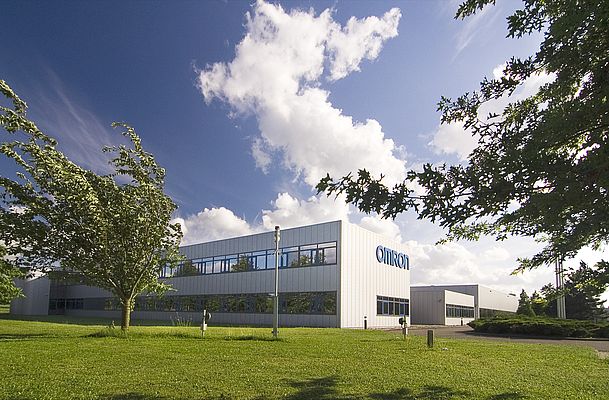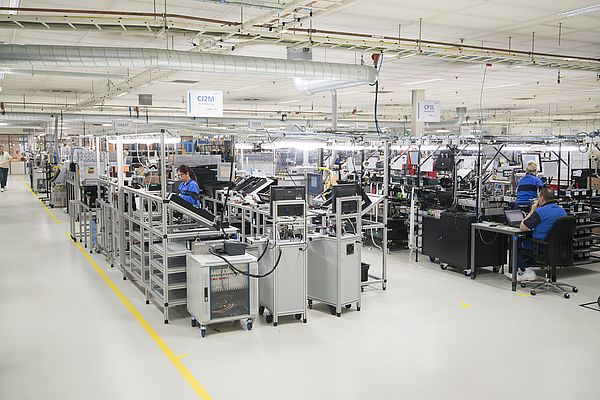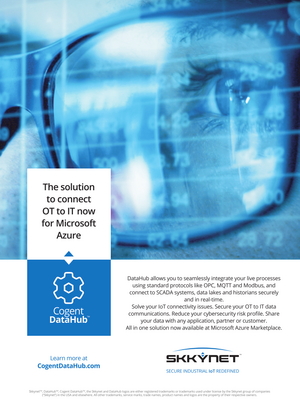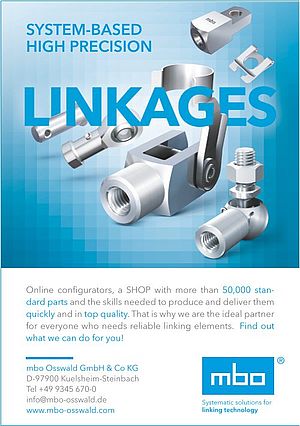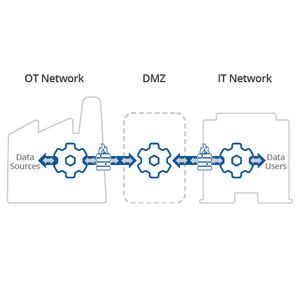In the main entrance of Den Bosch plant a demonstration video runs on a wide screen. A Chocolate bar is on a conveyor belt. A computer-controlled machine places a wrapper, which sticks close and chops him at just the right time. A camera makes this hyper-precise work possible. The computer and camera are products of the Japanese automation giant Omron. Worldwide employs 36,500 people at 210 locations converting together annually 6 billion. Omron will also include sphygmomanometers, ticketing systems at stations and sensors in cars.
Like so many manufacturers Omron moved most of its production to China in the first 10 years of this century, because of the low wages there. But now Omron is bringing back some of its production to Den Bosch. It's called 'reshoring' and it has nothing to do with the current crisis in China - Omron already decided on this move three years ago. Paul Sollewijn Gelpke (European Manufacturing & Supply Chain Manager) explains: "There was a time when 60-70% of what we sold was coming from China. But in the long term that turned out to be a risk. Salaries in China were increasing 10-15% per year and are expected to reach European levels in five years from now." The political situation in China led to strikes, and exchange rate fluctuations affected profit rates.
In order to lower the risk, Omron decided to move production closer to their customers. Omron Den Bosch grabbed this much needed opportunity with both hands. With the production moving to China in 2005 the factory in Den Bosch had lost many jobs and turnover decreased by 40%. Its survival was at a stake. "We realized that we needed to lower our production cost. With a few simple and cheap adjustments, we created a production line with three people, when the same line needed 8 people in China," says Paul Sollewijn Gelpke. And Den Bosch wanted more. "Some of the biggest machine builders and more innovative technology centers in our field are in Europe. We want to take advantage of that." The local R&D department developed the IPC, a new type of HMI. Omron in Japan encouraged this initiative and gave Den Bosch responsibility for the global production. Omron Den Bosch will see significant growth in the next few years. "We will go from one to three production teams. That will mean around 50 extra jobs, in addition to the 300 we already employ today.
'The Seven Samurai'
The name Omron comes from Omuro district of Kyoto, where founder Kazuma Tateisi in 1933 started as forerunner of Omron. From selling trouser presses and knife sharpeners, he was not much wiser. In 1932, a friend of Tateisi who worked as an X-ray salesman said to him, "If there were a high-precision timer for X-ray photography capable of operating accurately at a speed of 1/20 of a second, it would be huge success." He threw himself on producing a more accurate timer for X-rays in hospitals and he delivered a handmade prototype to Nissei Hospital in Osaka where it was tested and proved effective in operating at the required speed of 1/20 of a second. This was the beginning of Omron's commitment to "challenging ourselves to always do better" and the first milestone in Omron's history of innovation. In 1958, seven Omron researchers found the first sensor that could switch on and off without any contacts with material, something larger competitors at that time was not successful. The researchers got the nickname ' The Seven Samurai' and they are still reminded in every Omron premises by their amazing pictures.
In 1971, Omron released the world's first ATM in the market. Omron came with the Facial recognition in 2007, which is currently used in the cameras of most smartphones. Omron has 11,000 patents owned and annually invests 7 percent of sales in research and development. The privately held company is according to business magazine Forbes to the 2,000 largest companies in the world. Den Bosch is the largest site of Omron in the regions Europe, Africa and the Middle East. Which account for 19 percent of Omron's sales. Sollewijn Gelpke predicts that sales have doubled over the next six years to one billion euros.
Energy Efficiency at Den Bosch site
In addition to the above details what is interesting from energy efficiency point of view is the plan named "CO2 productivity on sales" where Den Bosch production site will develop and submit a medium-term plan to achieve the 20-20-20 Target.
Starting from 2016 Omron aims to comply in its factories with some severe KPIs like:
a) Restrict the electricity usage within 50 percent of the production value growth rate compared with 2015. This step will be significantly achieved by using our unique core-technology based on Sysmac platform.
b) prepare a master-plan for energy saving up to 2019.
Guidance on energy saving measures are: Change from fluorescent lamps and incandescent lamps to LEDs systematically; For pieces of equipment fully depreciated such as air conditioning equipment and compressors, change them according to new and energy-saving types and CFC-free; Set an electricity meter on the distribution board in order to implement the company-wide standards for reporting in the four categories of electricity usage (illumination and outlets, air conditioning, production and compressors); Implement and continue improvement of energy saving in utilities on the shop floor; To further select and actuate energy saving measures, perform an energy saving diagnosis by energy service companies (ESCo).
IoT, Big Data and Industrie 4.0
Further to the above environmental actions, OMN (Omron The Netherlands) wants to achieve more goals such as bring the innovation of Industrie 4.0 and IoT to production. IoT allows intelligent image sensors to tell everything from your age to how you feel and may give "eyes" to the Internet of Things. Because Omron is one of the major leading Industrial IoT influencers company around the globe, Sollewijn Gelpke says.
At OMN, our PLC's - NJ series- collects 'big data' from production lines and performs real-time analysis. The Omron "Sysmac Machine Automation Controller" simultaneously performs large-scale, high-speed, high-precision motion control and ultrafast data processing. On purpose, Sysmac platform enables and improves the activities either at floor and production areas at OMN:
1) Real-time line status & control
2) Analysis of quality issueso OEE improvements (help to improve OEE and quality by 20%)
3) Product traceability
4) Predictive maintenance
Next to that, OMN has the full capability to produce by field lab flexible manufacturing and works on innovative concepts for production line with flexibility towards product volume & types.
This mean:
1) No line change over time
2) Self-configuring and self-optimizing line
3) Reduced downtime
4) Full product traceability
5) Real-time status and control to MES
6) Mix manual and automatic steps
7) Cost effective reduction
8) Leveled cost of electricity
According to OMRON Industrial Automation Business (IAB) President Mr. Miyanaga's vision for growth that foresee to "achieve manufacturing innovation and promote factory tours as a weapon", Den Bosch plant will become a showroom factory where customers can take a look to the latest energy solutions.


